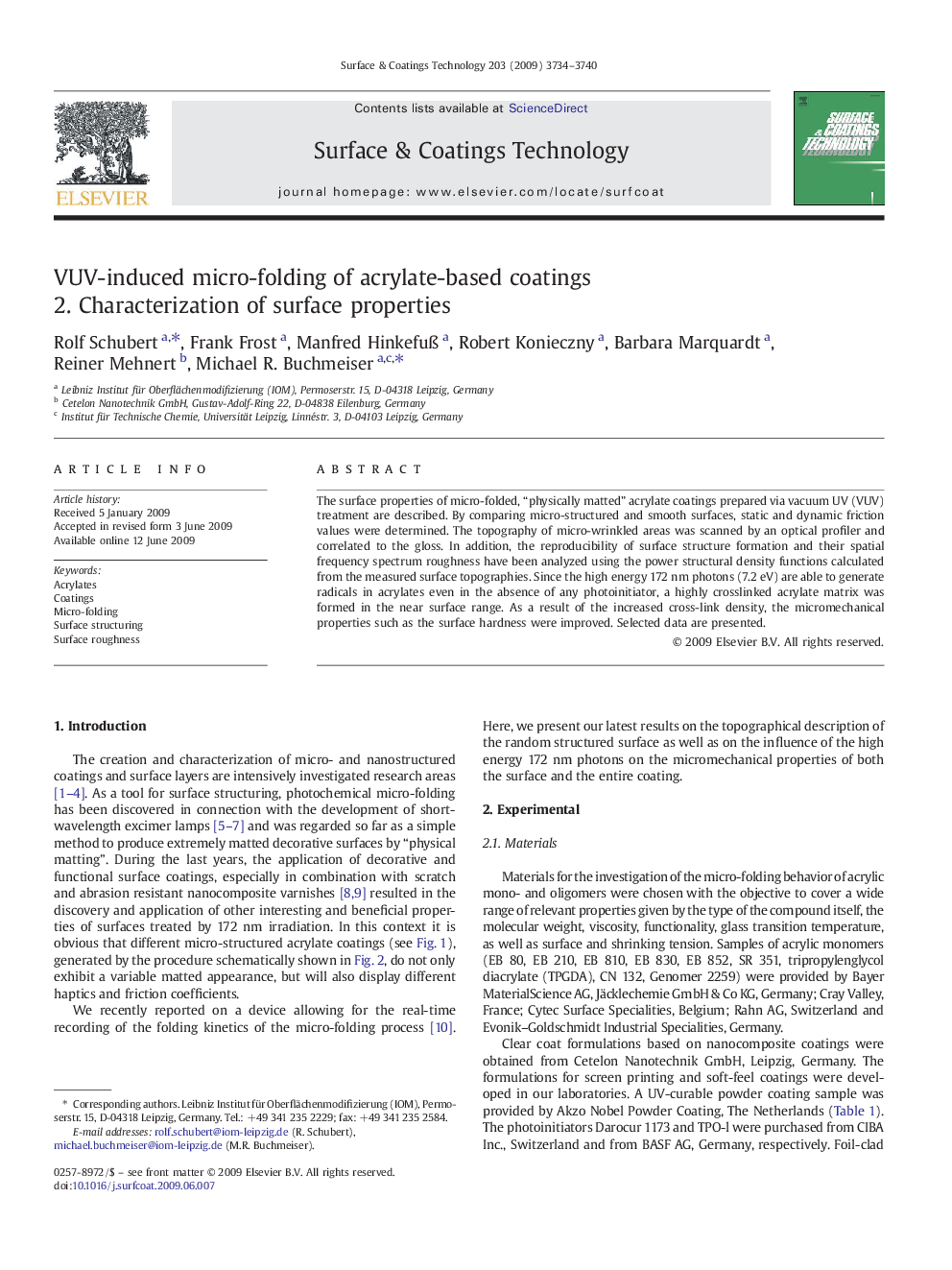| Article ID | Journal | Published Year | Pages | File Type |
|---|---|---|---|---|
| 1660603 | Surface and Coatings Technology | 2009 | 7 Pages |
Abstract
The surface properties of micro-folded, “physically matted” acrylate coatings prepared via vacuum UV (VUV) treatment are described. By comparing micro-structured and smooth surfaces, static and dynamic friction values were determined. The topography of micro-wrinkled areas was scanned by an optical profiler and correlated to the gloss. In addition, the reproducibility of surface structure formation and their spatial frequency spectrum roughness have been analyzed using the power structural density functions calculated from the measured surface topographies. Since the high energy 172Â nm photons (7.2Â eV) are able to generate radicals in acrylates even in the absence of any photoinitiator, a highly crosslinked acrylate matrix was formed in the near surface range. As a result of the increased cross-link density, the micromechanical properties such as the surface hardness were improved. Selected data are presented.
Related Topics
Physical Sciences and Engineering
Materials Science
Nanotechnology
Authors
Rolf Schubert, Frank Frost, Manfred HinkefuÃ, Robert Konieczny, Barbara Marquardt, Reiner Mehnert, Michael R. Buchmeiser,
